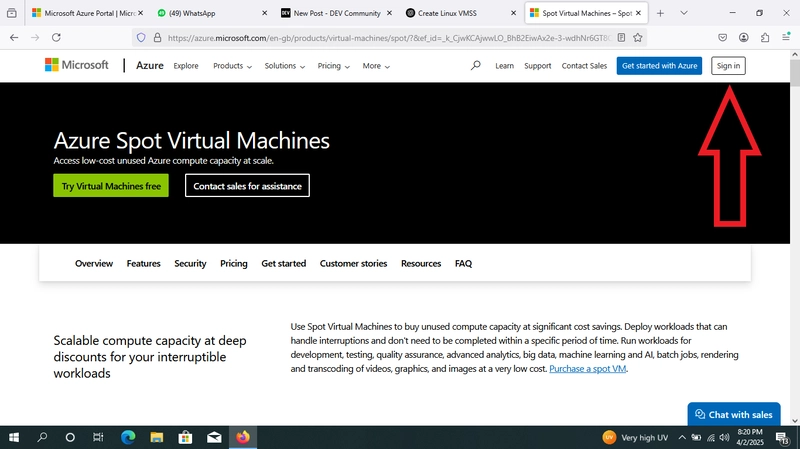Isolated API Routing in ViteJS with `vite-plugin-api-routes`
Tutorial: Isolated API Routing in ViteJS with vite-plugin-api-routes Introduction In this tutorial, we will learn how to enhance isolated API routing in ViteJS using the vite-plugin-api-routes plugin. This plugin improves visibility and project structure in Node.js and Express by mapping the directory structure to route rules. Prerequisites Before we begin, make sure you have the following: Basic knowledge of ViteJS, Node.js, and Express. An existing ViteJS project. Read the preview tutorial Enhancing API Routing in Vite.js with vite-plugin-api Step 1: Installation To install the vite-plugin-api-routes plugin, run the following command: yarn add vite-plugin-api-routes Step 2: Configuration In your ViteJS project, open the vite.config.ts file and add the following code: import { defineConfig } from "vite"; import apiRoutes from "vite-plugin-api-routes"; export default defineConfig({ plugins: [ apiRoutes({ mode: "isolated", // Configuration options go here }), ], }); Step 3: Directory Structure Next, let's create the API directory structure in your project's source folder (src/api). Here's an example structure: > tree src/api/ src/api/: └───user ├───USE.js ├───GET.js ├───POST.js └───[userId] // NextJS Format ├───GET.js ├───PUT.js └───DELETE.js Step 4: Exporting Route Rules In each API file within the directory structure, you can export the allowed request methods. For example, in the src/api/user/[userId]/DELETE.js file, you can export the default method for DELETE: ///file:src/api/user/[userId]/DELETE.js export default (req, res, next) => { res.send("DELETE REQUEST"); }; Similarly, the file names GET.js or POST.js will be exported as request parameters, such as /user/:userId/, following the Next.js/Remix framework. Step 5: Add Middlewares For every route you can export an array for middlewares. This can be used for authentication purposes or any other sort of middleware that you need. ///file:src/api/user/[userId]/DELETE.js import authMiddleware from "..."; const USER_DELETE = (req, res, next) => { res.send("DELETE REQUEST"); }; export default [authMiddleware, USER_DELETE]; Step 6: Configure Aliases In order to have proper access to the plugin's alias definitions, you need to include /.api/env.d.ts in either src/vite-env.d.ts or in your tsconfig.json. This will allow you to use the alias correctly throughout your project. Option 1: Add to vite-env.d.ts In your src/vite-env.d.ts, add the following line: /// Step 7: Run the Server Now, you can start the server using ViteJS, and the API routes will be automatically generated based on the directory structure and exported route rules. Conclusion Congratulations! You have successfully enhanced API routing in your ViteJS project using the vite-plugin-api-routes plugin. This improves project structure and simplifies configuration, making your development process more efficient. Remember to refer to the plugin's documentation for more advanced configuration options and customization possibilities. Happy coding!

Tutorial: Isolated API Routing in ViteJS with vite-plugin-api-routes
Introduction
In this tutorial, we will learn how to enhance isolated API routing in ViteJS using the vite-plugin-api-routes plugin. This plugin improves visibility and project structure in Node.js and Express by mapping the directory structure to route rules.
Prerequisites
Before we begin, make sure you have the following:
- Basic knowledge of ViteJS, Node.js, and Express.
- An existing ViteJS project.
- Read the preview tutorial Enhancing API Routing in Vite.js with vite-plugin-api
Step 1: Installation
To install the vite-plugin-api-routes plugin, run the following command:
yarn add vite-plugin-api-routes
Step 2: Configuration
In your ViteJS project, open the vite.config.ts file and add the following code:
import { defineConfig } from "vite";
import apiRoutes from "vite-plugin-api-routes";
export default defineConfig({
plugins: [
apiRoutes({
mode: "isolated",
// Configuration options go here
}),
],
});
Step 3: Directory Structure
Next, let's create the API directory structure in your project's source folder (src/api). Here's an example structure:
> tree src/api/
src/api/:
└───user
├───USE.js
├───GET.js
├───POST.js
└───[userId] // NextJS Format
├───GET.js
├───PUT.js
└───DELETE.js
Step 4: Exporting Route Rules
In each API file within the directory structure, you can export the allowed request methods. For example, in the src/api/user/[userId]/DELETE.js file, you can export the default method for DELETE:
///file:src/api/user/[userId]/DELETE.js
export default (req, res, next) => {
res.send("DELETE REQUEST");
};
Similarly, the file names GET.js or POST.js will be exported as request parameters, such as /user/:userId/, following the Next.js/Remix framework.
Step 5: Add Middlewares
For every route you can export an array for middlewares. This can be used for authentication purposes or any other sort of middleware that you need.
///file:src/api/user/[userId]/DELETE.js
import authMiddleware from "...";
const USER_DELETE = (req, res, next) => {
res.send("DELETE REQUEST");
};
export default [authMiddleware, USER_DELETE];
Step 6: Configure Aliases
In order to have proper access to the plugin's alias definitions, you need to include /.api/env.d.ts in either src/vite-env.d.ts or in your tsconfig.json. This will allow you to use the alias correctly throughout your project.
Option 1: Add to vite-env.d.ts
In your src/vite-env.d.ts, add the following line:
/// Step 7: Run the Server
Now, you can start the server using ViteJS, and the API routes will be automatically generated based on the directory structure and exported route rules.
Conclusion
Congratulations! You have successfully enhanced API routing in your ViteJS project using the vite-plugin-api-routes plugin. This improves project structure and simplifies configuration, making your development process more efficient.
Remember to refer to the plugin's documentation for more advanced configuration options and customization possibilities.
Happy coding!









































































































































































![[The AI Show Episode 142]: ChatGPT’s New Image Generator, Studio Ghibli Craze and Backlash, Gemini 2.5, OpenAI Academy, 4o Updates, Vibe Marketing & xAI Acquires X](https://www.marketingaiinstitute.com/hubfs/ep%20142%20cover.png)


























































































































![[FREE EBOOKS] The Kubernetes Bible, The Ultimate Linux Shell Scripting Guide & Four More Best Selling Titles](https://www.javacodegeeks.com/wp-content/uploads/2012/12/jcg-logo.jpg)



![From drop-out to software architect with Jason Lengstorf [Podcast #167]](https://cdn.hashnode.com/res/hashnode/image/upload/v1743796461357/f3d19cd7-e6f5-4d7c-8bfc-eb974bc8da68.png?#)







































































































.png?#)




.jpg?#)




















 (1).webp?#)











_Christophe_Coat_Alamy.jpg?#)








































































































![Rapidus in Talks With Apple as It Accelerates Toward 2nm Chip Production [Report]](https://www.iclarified.com/images/news/96937/96937/96937-640.jpg)








































































































































